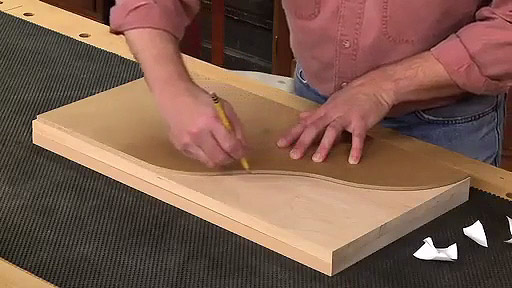Plywood makes it easy to build great-looking cases in a short time. If there’s one drawback to using plywood, it’s covering the edges. Most of the time, I use thin strips of hardwood edging. My goal is to have the edging and plywood blend seamlessly. The process sounds simple enough — cut the edging to size, and then glue it to the plywood. Of course, when it gets right down to it, there’s more to the process. One of the first things to consider is when to apply the edging. I prefer to apply extra-wide edging after gluing up the case. This provides a cleaner look and hides both the plies and any case joinery.

When making the strips, take some time to find boards with grain and color that closely match the plywood. When converting the boards to individual strips, you have a few goals. The fi rst is the width of the strips. I want them to overhang the plywood a bit on each side. To do this, I plane the edging blanks to be slightly (1⁄32") thicker (wider) than the thickness of the plywood. This makes bringing the edges flush quick and easy later. There’s one more thing I want to mention about the edging pieces. I cut them

When you’re ready to glue the edging in place, it’s a good idea to have a plan for how they go on. For a simple case, like the one shown in the first slide, I start with the outside vertical edges, then move to the horizontal pieces. On more complex cases, I follow the process shown here. Now, you’re ready to spread some glue. Start from one end and clamp the edging in place. Your aim is to have the edging overhang a bit on each side of the plywood. Since it’s only slightly wider, there won’t be much, and you can feel when the piece is centered.

Work your way along the case, aligning and clamping as you go. Apply enough clamps to close any gaps. If you can’t get clamps in (if the back is installed, for example), you can use strips of masking tape to hold the edging in place. Once the glue dries, all that’s left to do is bring the edging flush with a few swipes from a sanding block.











